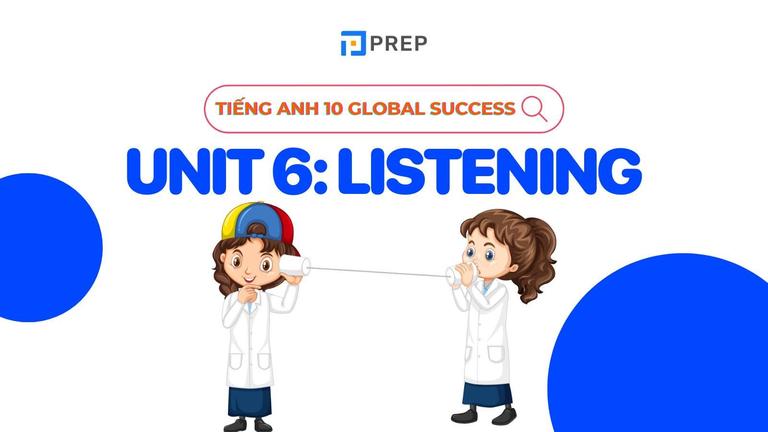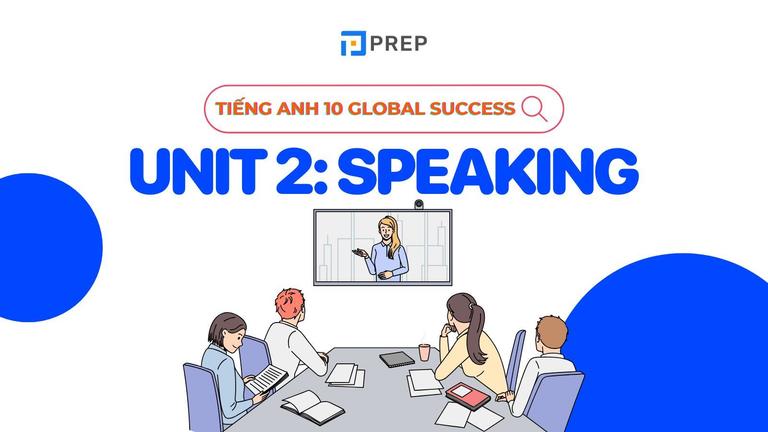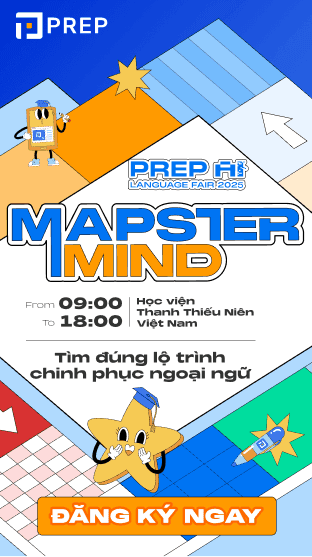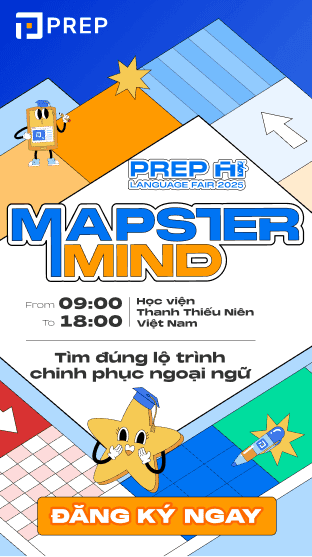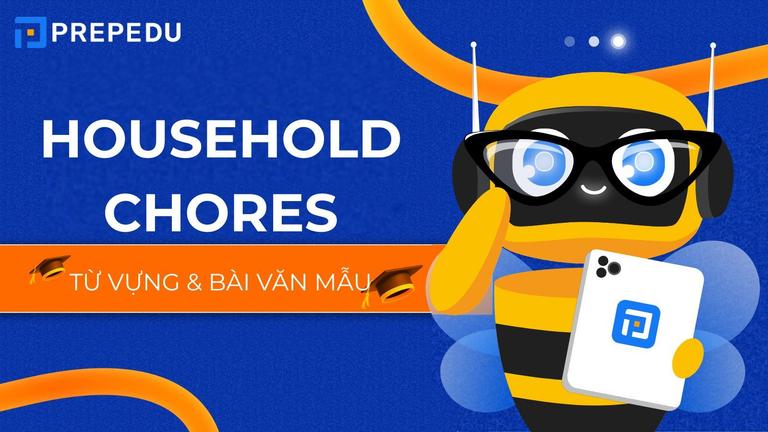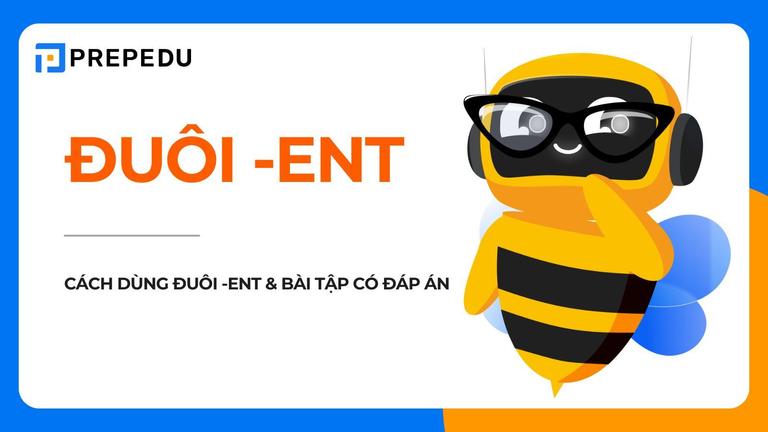Đề bài và đáp án chi tiết Reading IELTS Cambridge 12 Test 3 passage 1 Flying tortoises
Bài đọc IELTS Cambridge 12 Test 3 Passage 1 – Flying Tortoises kể về một dự án bảo tồn đặc biệt ở quần đảo Galapagos, nơi các nhà khoa học và tổ chức môi trường đã sử dụng máy bay trực thăng để di chuyển những chú rùa khổng lồ đến nơi sinh sống an toàn nhằm phục hồi quần thể loài. Trong Passage này, thí sinh cần hiểu được mục tiêu, quá trình và tác động của dự án, cũng như nắm bắt được thông tin chi tiết, ý chính và suy luận từ các đoạn mô tả khoa học. Đây là bài luyện đọc điển hình giúp người học rèn kỹ năng Scanning – tìm thông tin nhanh và Understanding Opinions – nhận diện quan điểm trong văn bản học thuật. Bài viết sau, Prep sẽ cung cấp đề bài, đáp án chi tiết và từ vựng hay trong bài để bạn ghi nhớ.

I. Đề bài Reading IELTS Cambridge 12 Test 3 passage 1 Flying tortoises
Đọc đề bài Reading IELTS Cambridge 12 Test 3 passage 1 Flying tortoises:
Reading Flying tortoises
Flying tortoises
An airborne reintroduction programme has helped conservationists take significant steps to protect the endangered Galápagos tortoise.
A. Forests of spiny cacti cover much of the uneven lava plains that separate the interior of the Galápagos island of Isabela from the Pacific Ocean. With its five distinct volcanoes, the island resembles a lunar landscape. Only the thick vegetation at the skirt of the often cloud-covered peak of Sierra Negra offers respite from the barren terrain below. This inhospitable environment is home to the giant Galápagos tortoise. Some time after the Galápagos’s birth, around five million years ago, the islands were colonised by one or more tortoises from mainland South America. As these ancestral tortoises settled on the individual islands, the different populations adapted to their unique environments, giving rise to at least 14 different subspecies. Island life agreed with them. In the absence of significant predators, they grew to become the largest and longest-living tortoises on the planet, weighing more than 400 kilograms, occasionally exceeding 1.8 metres in length and living for more than a century.
B. Before human arrival, the archipelago’s tortoises numbered in the hundreds of thousands. From the 17th century onwards, pirates took a few on board for food, but the arrival of whaling ships in the 1790s saw this exploitation grow exponentially. Relatively immobile and capable of surviving for months without food or water, the tortoises were taken on board these ships to act as food supplies during long ocean passages. Sometimes, their bodies were processed into high-grade oil. In total, an estimated 200,000 animals were taken from the archipelago before the 20th century. This historical exploitation was then exacerbated when settlers came to the islands. They hunted the tortoises and destroyed their habitat to clear land for agriculture. They also introduced alien species — ranging from cattle, pigs, goats, rats and dogs to plants and ants — that either prey on the eggs and young tortoises or damage or destroy their habitat.
C. Today, only 11 of the original subspecies survive and of these, several are highly endangered. In 1989, work began on a tortoise-breeding centre just outside the town of Puerto Villamil on Isabela, dedicated to protecting the island’s tortoise populations. The centre’s captive-breeding programme proved to be extremely successful, and it eventually had to deal with an overpopulation problem.
D. The problem was also a pressing one. Captive-bred tortoises can’t be reintroduced into the wild until they’re at least five years old and weigh at least 4.5 kilograms, at which point their size and weight — and their hardened shells — are sufficient to protect them from predators. But if people wait too long after that point, the tortoises eventually become too large to transport.
E. For years, repatriation efforts were carried out in small numbers, with the tortoises carried on the backs of men over weeks of long, treacherous hikes along narrow trails. But in November 2010, the environmentalist and Galápagos National Park liaison officer Godfrey Merlin, a visiting private motor yacht captain and a helicopter pilot gathered around a table in a small café in Puerto Ayora on the island of Santa Cruz to work out more ambitious reintroduction. The aim was to use a helicopter to move 300 of the breeding centre's tortoises to various locations close to Sierra Negra.
F. This unprecedented effort was made possible by the owners of the 67-metre yacht White Cloud, who provided the Galápagos National Park with free use of their helicopter and its experienced pilot, as well as the logistical support of the yacht, its captain and crew. Originally an air ambulance, the yacht's helicopter has a rear double door and a large internal space that's well suited for cargo, so a custom crate was designed to hold up to 33 tortoises with a total weight of about 150 kilograms. This weight, together with that of the fuel, pilot and four crew, approached the helicopter's maximum payload, and there were times when it was clearly right on the edge of the helicopter's capabilities. During a period of three days, a group of volunteers from the breeding centre worked around the clock to prepare the young tortoises for transport. Meanwhile, park wardens, dropped off ahead of time in remote locations, cleared landing sites within the thick brush, cacti and lava rocks.
G. Upon their release, the juvenile tortoises quickly spread out over their ancestral territory, investigating their new surroundings and feeding on the vegetation. Eventually, one tiny tortoise came across a fully grown giant who had been lumbering around the island for around a hundred years. The two stood side by side, a powerful symbol of the regeneration of an ancient species.
You should spend about 20 minutes on Questions 1-13, which are based on Reading Passage 1.
Questions 1-7
Reading Passage 1 has seven paragraphs, A-G.
Choose the correct heading for each paragraph from the list of headings below.
Write the correct number, i-viii, in boxes 1-7 on your answer sheet.
List of Headings
i. The importance of getting the timing right
ii. Young meets old
iii. Developments to the disadvantage of tortoise populations
iv. Planning a bigger idea
v. Tortoises populate the islands
vi. Carrying out a carefully prepared operation
vii. Looking for a home for the islands' tortoises
viii. The start of the conservation project
-
Paragraph A
-
Paragraph B
-
Paragraph C
-
Paragraph D
-
Paragraph E
-
Paragraph F
-
Paragraph G
Questions 8-13
Complete the notes below.
Choose ONE WORD ONLY from the passage for each answer.
Write your answers in boxes 8-13 on your answer sheet.
The decline of the Galápagos tortoise
-
Originally from mainland South America
-
Numbers on Galápagos islands increased, due to lack of predators
-
17th century: small numbers taken onto ships used by 8 ..............................
-
1790s: very large numbers taken onto whaling ships, kept for 9 ............................, and also used to produce 10 ..............................
-
Hunted by 11 ............................ on the islands
-
Habitat destruction: for the establishment of agriculture and by various 12 ............................ not native to the islands, which also fed on baby tortoises and tortoises' 13 ............................
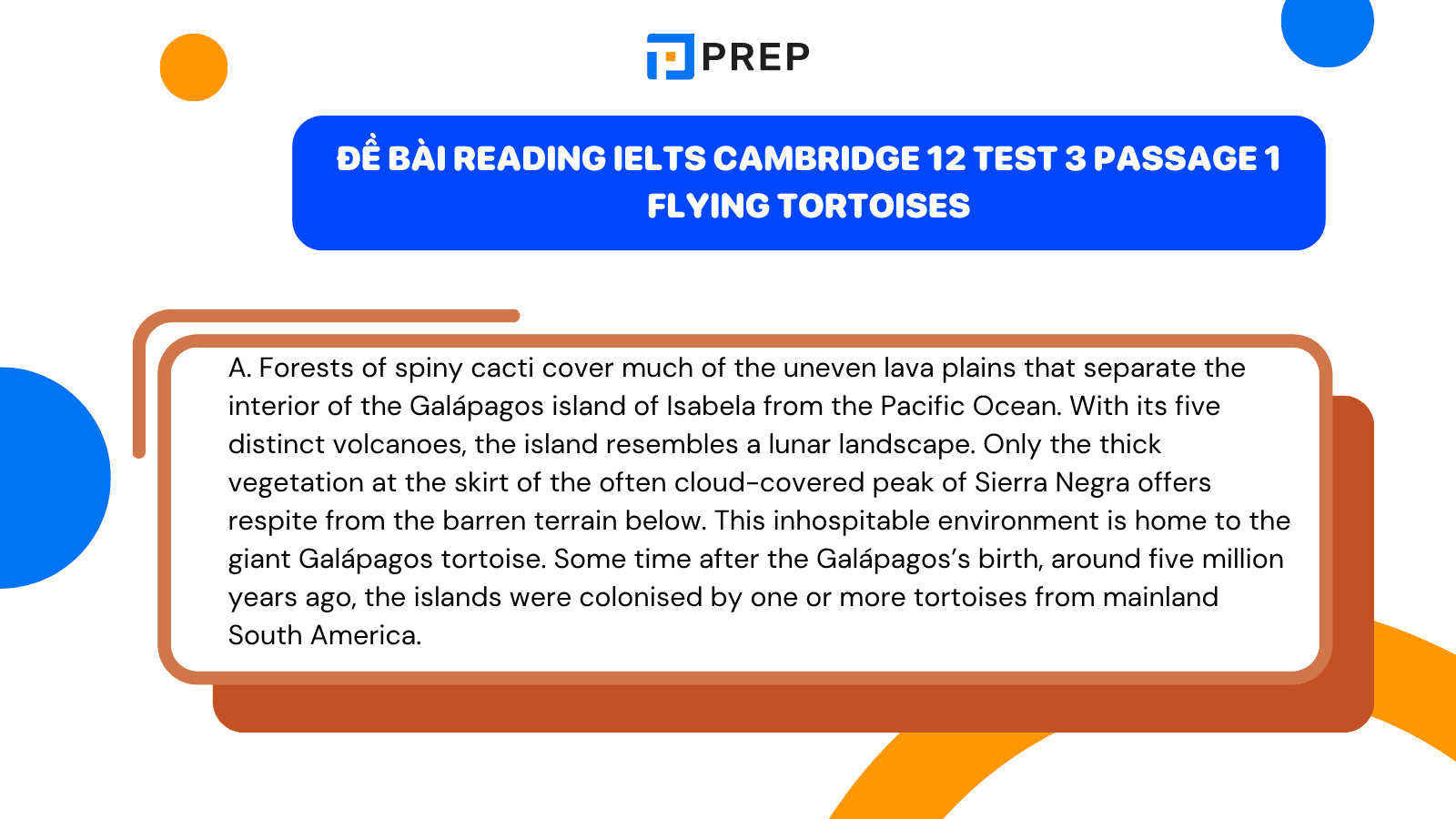
II. Đáp án bài đọc Reading IELTS Cambridge 12 Test 3 passage 1 Flying tortoises
Tham khảo đáp án bài đọc Reading IELTS Cambridge 12 Test 3 passage 1 Flying tortoises:
Reading Passage 1, Questions 1-13
-
v
-
iii
-
viii
-
i
-
iv
-
vi
-
ii
-
pirates
-
food
-
oil
-
settlers
-
species
-
eggs
III. Giải thích đáp án chi tiết bài đọc Flying Tortoises
Tham khảo phần giải thích đáp án chi tiết trong bài đọc Flying tortoises để biết cách xử lý từng dạng bài:
|
Câu hỏi |
Đáp án |
Giải thích chi tiết |
|
1 |
v – Tortoises populate the islands |
Đoạn A mô tả cách loài rùa từ Nam Mỹ trôi dạt đến Galápagos, thích nghi và hình thành nhiều phân loài khác nhau. Đây chính là giai đoạn “rùa chiếm lĩnh các đảo”. |
|
2 |
iii – Developments to the disadvantage of tortoise populations |
Đoạn B nói về việc rùa bị săn bắt bởi cướp biển, thợ săn cá voi và người định cư, cùng tác động của loài xâm lấn. Tất cả đều là “những phát triển bất lợi cho quần thể rùa”. |
|
3 |
viii – The start of the conservation project |
Đoạn C đề cập việc xây dựng trung tâm nhân giống rùa năm 1989 để bảo vệ quần thể – chính là sự “khởi đầu dự án bảo tồn”. |
|
4 |
i – The importance of getting the timing right |
Đoạn D nói về việc rùa phải đạt kích thước nhất định mới được thả ra, nhưng nếu đợi quá lâu sẽ quá lớn để vận chuyển – nhấn mạnh “tầm quan trọng của thời điểm thích hợp”. |
|
5 |
iv – Planning a bigger idea |
Đoạn E kể lại cuộc họp tại quán cà phê khi nhóm chuyên gia bàn kế hoạch dùng trực thăng để di chuyển 300 con rùa – đây là “lên kế hoạch cho một ý tưởng lớn hơn”. |
|
6 |
vi – Carrying out a carefully prepared operation |
Đoạn F mô tả chi tiết việc sử dụng trực thăng, thiết kế thùng, tính toán tải trọng, phối hợp nhân lực – thể hiện “một chiến dịch được chuẩn bị cẩn thận”. |
|
7 |
ii – Young meets old |
Đoạn G mô tả cảnh rùa non gặp rùa già trên đảo – hình ảnh biểu tượng “khi trẻ gặp già”. |
Giải thích chi tiết phần Notes Completion (Câu 8–13)
|
Câu hỏi |
Đáp án |
Giải thích |
|
8 |
pirates |
Đoạn B: “From the 17th century onwards, pirates took a few on board for food” → rùa bị cướp biển lấy để làm thức ăn. |
|
9 |
food |
Cũng trong đoạn B, nói rằng rùa được giữ trên tàu “as food supplies during long ocean passages”. |
|
10 |
oil |
Đoạn B: “Sometimes, their bodies were processed into high-grade oil.” → dùng để sản xuất dầu. |
|
11 |
settlers |
Đoạn B: “When settlers came to the islands, they hunted the tortoises...” → người định cư săn bắt rùa. |
|
12 |
species |
Đoạn B: “They also introduced alien species… that prey on eggs and young tortoises or destroy their habitat.” → loài ngoại lai. |
|
13 |
eggs |
Cũng đoạn này: loài xâm lấn ăn “eggs and young tortoises” → trứng. |
IV. Từ vựng hay trong bài Flying Tortoises cần ghi nhớ
Take note nhanh từ vựng hay trong bài đọc để mở rộng vốn từ vựng nhé!
|
Từ vựng |
Nghĩa tiếng Việt |
Ví dụ |
|
endangered species |
loài có nguy cơ tuyệt chủng |
The Galápagos tortoise is an endangered species. → Rùa Galápagos là một loài có nguy cơ tuyệt chủng. |
|
captive-breeding programme |
chương trình nhân giống nuôi nhốt |
The captive-breeding programme helped increase tortoise numbers. → Chương trình nhân giống nuôi nhốt giúp tăng số lượng rùa. |
|
reintroduction |
tái thả về tự nhiên |
The reintroduction of tortoises to their natural habitat was successful. → Việc tái thả rùa về môi trường tự nhiên đã thành công. |
|
predator |
động vật săn mồi |
The tortoises had no natural predators on the islands. → Rùa không có kẻ săn mồi tự nhiên trên đảo. |
|
alien species |
loài xâm lấn, loài ngoại lai |
Alien species damaged the native tortoise habitat. → Loài xâm lấn đã phá hủy môi trường sống của rùa bản địa. |
|
payload |
trọng tải (máy bay, tàu) |
The helicopter carried the maximum payload of tortoises and fuel. → Trực thăng mang trọng tải tối đa gồm rùa và nhiên liệu. |
|
logistical support |
hỗ trợ hậu cần |
The yacht crew provided logistical support for the operation. → Đội thủy thủ cung cấp hỗ trợ hậu cần cho chiến dịch. |
|
ancestral territory |
lãnh thổ tổ tiên |
The tortoises returned to their ancestral territory on the island. → Những chú rùa trở lại lãnh thổ tổ tiên trên đảo. |
|
resemble |
giống với, tương tự |
The island resembles a lunar landscape. → Hòn đảo trông giống như một cảnh quan trên mặt trăng. |
|
exploitation |
sự khai thác, bóc lột |
The exploitation of tortoises led to a sharp population decline. → Việc khai thác rùa dẫn đến sự sụt giảm mạnh về số lượng. |

Trên đây là đề bài và đáp án bài đọc Reading IELTS Cambridge 12 Test 3 passage 1 Flying tortoises. Hy vọng tài liệu trên sẽ hữu ích cho bạn trong quá trình luyện thi IELTS.
Học tiếng Anh online dễ dàng hơn với PREP - Nền tảng Học & Luyện thi thông minh cùng AI. Nhờ công nghệ AI độc quyền, bạn có thể tự học trực tuyến ngay tại nhà, chinh phục lộ trình học IELTS, TOEIC, tiếng Anh giao tiếp hiệu quả. Bên cạnh đó, học viên còn có sự hỗ trợ tuyệt vời từ Teacher Bee AI, trợ lý ảo giúp bạn giải đáp thắc mắc và đồng hành 1-1 trong suốt quá trình học tập. Hãy click TẠI ĐÂY hoặc liên hệ HOTLINE 0931428899 để nhận tư vấn chi tiết về các khóa học tiếng Anh chất lượng nhất thị trường!
Tải ngay app PREP để bắt đầu hành trình học tiếng Anh tại nhà với chương trình học luyện thi online chất lượng cao.

Chào bạn! Mình là Hiền Hoàng, hiện đang đảm nhận vai trò quản trị nội dung sản phẩm tại Blog của website prepedu.com.
Với hơn 5 năm tự học các ngoại ngữ như tiếng Anh, tiếng Trung và ôn luyện một số kỳ thi IELTS, TOEIC, HSK, mình đã tự đúc rút được nhiều kinh nghiệm để hỗ trợ hàng nghìn người đang gặp khó khăn trong việc học ngoại ngữ. Hy vọng rằng những chia sẻ phía trên sẽ giúp ích cho bạn trong quá trình tự ôn luyện thi hiệu quả tại nhà!
Bình luận
Nội dung premium
Xem tất cảLộ trình cá nhân hoá
Có thể bạn quan tâm
Kết nối với Prep

MSDN: 0109817671.
Địa chỉ liên hệ: Tòa nhà Vinaconex, 34 Láng Hạ, phường Láng, TP Hà Nội.
Trung tâm CSKH tại HN: Lô 21 C2 Khu đô thị Nam Trung Yên, phường Yên Hòa, TP Hà Nội.
Trung tâm CSKH tại HCM: 288 Pasteur, Phường Xuân Hòa, TP Hồ Chí Minh
Trụ sở Công ty: Số nhà 20, ngách 234/35 đường Hoàng Quốc Việt, phường Nghĩa Đô, TP Hà Nội.
Phòng luyện ảo - Trải nghiệm thực tế - Công nghệ hàng đầu.
Hotline: 0931 42 8899.
Trụ sở Công ty: Số nhà 20, ngách 234/35 đường Hoàng Quốc Việt, phường Nghĩa Đô, TP Hà Nội.
Giấy chứng nhận hoạt động đào tạo, bồi dưỡng số 1309/QĐ-SGDĐT ngày 31 tháng 07 năm 2023 do Sở Giáo dục và Đào tạo Hà Nội cấp.
